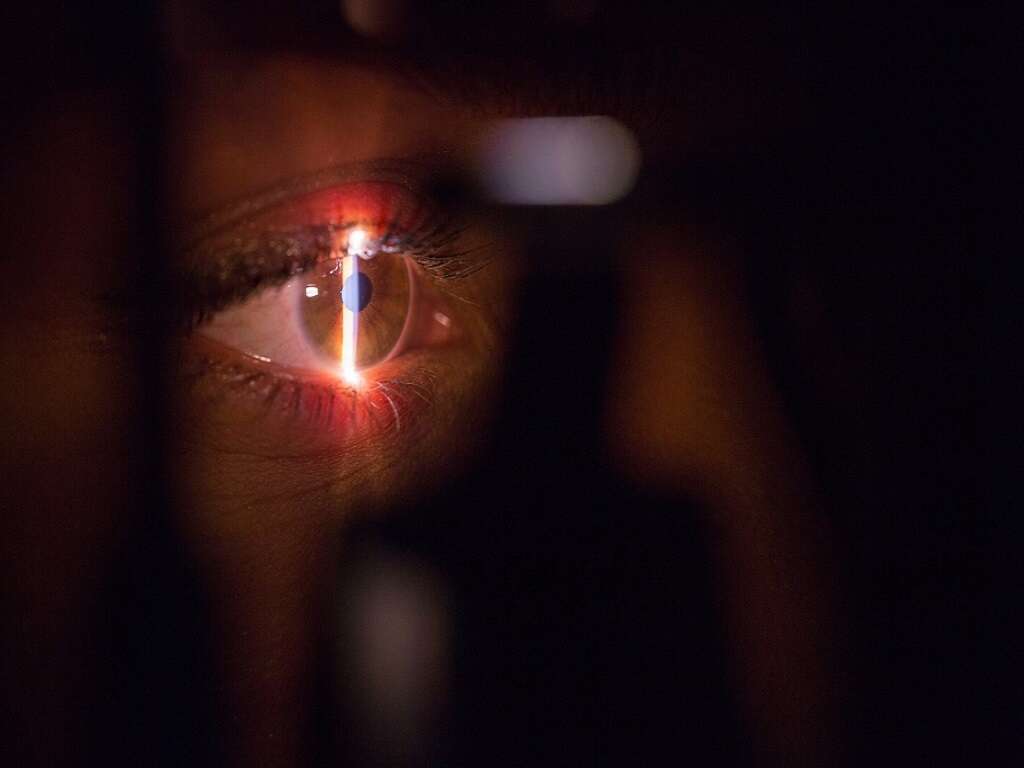10 Symptoms of Ocular Migraine
If you’ve had a migraine in the past, and many people have, you will know they are generally typified as causing pain in the head.
This pain is often significant and can vary from person to person but migraines are not often associated with other symptoms. Some people with severe migraines, however, might experience flashing sensations.
Ocular migraines have the symptoms of other migraines, but they also tend to have more visual symptoms. They can be very uncomfortable and patients will often need to seek medical assistance to ease their discomfort. Ocular migraines can cause the patient to become unable to see clearly, albeit temporarily.

Symptom #1: Throbbing Headache
Headaches are very common. So common that we will often just dismiss them as one of those things, and something that will pass. Because they are so common, they are often not helpful in pinpointing the cause of a condition. Some types of headache, though, can at least help us narrow down the suspected causes a little.
Patients with an ocular migraine are likely to experience a headache that gives a throbbing sensation. They are also likely to last somewhere between 4 to 72 hours. Give this information to your doctor as it could be valuable information in getting to the root of the problem.

Symptom #2: Headache on One Side
Having a symptom in a specific part of your body can be very useful in helping to discover what is causing it. For example, having a headache that seems to occur on only one side of the head is a strong indicator that you have an ocular migraine.
If your headaches are noticeably one-sided, let your doctor know. This can help them pinpoint the exact cause, which can then help them to find a suitable treatment. While it is often easy to try to grin and bear the pain of headaches, you should consider speaking to a medical professional if the symptoms persist, or if they are particularly painful.

Symptom #3: Painful Headaches
For many of us, a headache is often little more than a minor inconvenience. The pain caused is usually only mild and doesn’t affect our day too much. Even when the pain does begin to get more intense, a paracetamol or other painkillers will usually help alleviate the discomfort.
For some people, though, a headache is far less trivial. The pain can be excruciating for some and even painkillers will not help to make the symptoms bearable. One symptom of an ocular migraine is that the severity of pain can range from moderate to severe. You should arrange to speak with a doctor if you are experiencing headaches that are unbearable.

Symptom #4: Nausea
Nausea generally manifests itself as a feeling of being unwell, and perhaps a sensation that the room is spinning. One of the most notable symptoms is that it causes an urge to vomit, while the stomach can also feel quite uncomfortable. It is a very common symptom caused by a range of factors and most of us have experienced it at some point.
If you are experiencing headaches and nausea then you might want to consider speaking with a medical professional. Experiencing such symptoms together could be a sign of a potentially serious underlying problem. The nausea is often accompanied by vomiting.

Symptom #5: Worsens When You Move
When we are ill, we will generally just lie still for most of the day, if we can. We just won’t feel like doing anything, having little energy or motivation to be active. Sometimes, we will often stay still because doing so helps to alleviate the symptoms a little.
If your symptoms get worse when you move, then it may well be down to an ocular migraine. Again, this is information that you should pass on to your doctor to help them reach the correct diagnosis. You should arrange to speak with your doctor if you have not done so already if these symptoms persist.

Symptom #6: Light Sensitivity
We all know what is it like to have somebody turn a light on in a dark room and find the brightness difficult to bear. It can leave us hurrying to cover our eyes, but all will return to normal within a few moments or so. As our eyes adjust, we will find the increased light more bearable, and even comfortable.
Some conditions, though, can cause a sensitivity to light that can last for longer. This is a symptom associated with an ocular migraine and it can leave people wanting to stay in dark rooms. Light sensitivity can be caused by a range of factors and is something that should be checked out.

Symptom #7: Sound Sensitivity
Sound can be irritating, or distracting, especially when we are trying to sleep or work. Despite this, it doesn’t usually bother us even when loud, provided it is welcome and expected, of course. For some people, though, even fairly quiet sounds can become very difficult to bear.
An ocular migraine can cause considerable sensitivity to sound. It can make it difficult for the patient to be around other people, and they might want to seek out a quiet place to stay. Such a symptom can be caused by many things and it is something that you should consider investigating.

Symptom #8: Flickering Spots
Our eyes do an excellent job of letting us know what is around us. They relay light from the outside world to the brain, which then transforms the information into what we see. As good as the system is, though, it does not always work perfectly.
People with ocular migraines will often experience a blind spot in the center of their vision that “flickers.” They will also sometimes experience blind spots that will move slowly across their field of view. This is a symptom that you should get checked out when you are able to, regardless of the suspected cause.

Symptom #9: Cracked Window Visual Effects
Most headaches and migraines are usually limited in causing us pain, to varying degrees. Sometimes, though, they can also cause various visual effects, and even intense standard migraines can cause a flashing sensation in the eyes. With an ocular migraine, you might experience a visual effect that is quite distinctive.
Patients with ocular migraines will sometimes note that they experience a visual effect that’s similar to the appearance of a cracked window. A kind of ring of zigzags can also be experienced in the center of the patient’s vision. It can be helpful to note down what you are experiencing so that you remember everything when you see a medical professional.

Symptom #10: Affects One Eye
Our eyes generally work together. Having more than one, facing forward, allows us to triangulate. This ability helps us to judge distances and things can become more difficult for us if we have only one eye. Patients with an ocular migraine will tend to find that they are experiencing visuals in one eye only.
Because the eyes work together, it is not always easy to notice that only one eye is being affected. The patient may need to close one eye for a while to realize this. In some cases, the visuals can get severe enough to impair vision to a point where the patient cannot see clearly.











